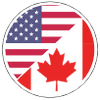“Working and producing sustainably” – that sounds easy. But as a company that’s constantly growing and producing, we’re again and again faced with the question of what it means specifically for us if we want to be consistent. Sustainable materials and production in Portugal instead of in Asia are important aspects of our approach, but once you start to think about sustainability in the supply chain, they are only a beginning.
For Wildling Shoes it’s not enough that suppliers of our materials work sustainably and can prove it with certification. We want to go beyond that, to the raw materials and their production. For us, “sustainable” means more than “sustainable materials” and we want to look closely at the working conditions in the various businesses and to include economic aspects. What's behind this term “sustainability”, which is currently being used gratuitously wherever you look?
In the few years we've been producing for, we've learned a lot – also through mistakes. But what do we need to do to avoid mistakes in the future, and to really remain true to our values, from the selection of raw materials through to the end of a Wildling shoe’s life?
Before a supply chain can be sustainable, it must be transparent
Sustainability begins long before production (in our case in Portugal), during the extraction of raw materials, and it doesn't stop when our Wildling shoes leave the factory, but moves on to the consumer via sales or shipping, finally ending with the disposal of the product, which should have a long life and be disposed of without causing any harm.
It’s a big challenge that we’re taking on.
During production, the materials we’ve selected are made into a shoe, but where do those materials come from?
We want to know exactly where our suppliers get their raw materials - the cotton, pure new wool, linen, hemp or paper - and also what working conditions are like for the cotton pickers, weavers and textile-processing companies. We ask about which chemicals are used when washing and dying, and which additional products the textiles are treated with.
To do that, we first have to know about everyone involved in the supply chain. Transparency from raw material to finished product. In the Fashion Transparency Index 2019, the 200 biggest fashion brands were investigated with regard to information about their supply chain. In 2018, only one brand gave the name of their raw-material supplier. It's not possible to tell from the Index whether the other brands didn't know who their suppliers were, or if they simply didn't want to name them, but it shows how hard it is for both companies and consumers to obtain complete transparency.

Image: Wildling Shoes/Jonas Schweitzer-Faust | Wildling minimal shoes being produced
How we achieve a transparent and sustainable supply chain
So in order to make sure your supply chain is sustainable, you first have to be able to identify it. When Anna and Ran founded Wildling Shoes, two questions were at the forefront: Where can we get the material in organic quality, and where should we produce? Sustainability was a deciding factor, but the founders soon realized that using organic cotton wasn't going to be enough.
What are the points that define a sustainable supply chain for us at Wildling Shoes today?
The Global Compact Network Germany defines sustainable supply chains as follows:
“Sustainability in supply chains is the management of ecological, social and economic effects and the promotion of good corporate practices throughout the life cycle of products and services”
How do you fill this definition with life when you have a product that is made of many parts and - because there are various designs – not always made from the same materials?
Before we can ensure that our supply chain is sustainable, we have to define what we want and expect, so that we can clearly communicate these requirements to our suppliers.
For our own use we expanded the Global Compact Network’s definition a little bit, defining the sub-areas as follows:
Ecological: We protect the environment and take responsibility for the planet in all activities along the Wildling Shoes supply chain.
Social: We take responsibility and treat all employees along the Wildling Shoes supply chain fairly.
Economic: We maintain fair business practices and relationships with all participating companies and organisations in the Wildling Shoes supply chain.
The ecological dimension can be broken down into many more parts: What’s our energy consumption, how high are our CO2 emissions, what do we do with the water used when creating the product, what effect do our actions have on biodiversity (think about cotton mono-cultures), which chemicals are used, and so on.
For us that means that over the whole product life cycle:
We take responsibility for our own business actions as well as for the supply chain that comes before and after us.
That means that responsibility starts with the raw materials and doesn't end with the delivery of the shoe to the customer, but also goes beyond that, to the disposal or reuse of the shoe and/or the materials used.

Image: Wildling Shoes/Sarah Pabst | A person flipping through samples
Over 15 supply chains for one Wildling shoe
Depending on the model and the season, a single Wildling shoe consists of about 15 different pieces: upper material, lining, eyelets, laces, membrane, microfiber, thread, soles, glue, tongue, insole... A t-shirt on the other hand is made of fabric, for example cotton, and perhaps also thread and the washing label.
Having fifteen parts means that we have to request information and data from 15 different suppliers, who then also have to ask their suppliers for that information and data. With a great number of standards and certificates it can soon get complicated.
So we request certificates, ask about working conditions, the processing of materials, and if necessary we think together about alternatives. Whenever possible, we go to our suppliers’ companies and have a close look at everything. We've already been working with many of them for a long time and have a relationship of trust. With regional suppliers such as Nordwolle we can trace the entire process from the raw material (in this case the sheep’s wool) to the finished lining. Ideally we would like to do the same with all our other raw materials. In most cases the origin and background of materials used can be checked on the individual product pages in the shop.
The bigger Wildling Shoes gets and the more shoes we produce, the better will be our bargaining position with suppliers, who are mostly prepared to patiently answer all our questions and want to work openly with us. In that way we boost our influence and take responsibility, which also helps make us more interesting for additional suppliers who want to make an effort to use more sustainable products, to take time with us to gather the necessary data and information and who, like us, want to keep on developing and improving in terms of sustainability.
Anna, Ran and the Wildling Shoes Team
Header Image: ©obsessedwithbarefootshoes | Three people wearing minimal shoes


